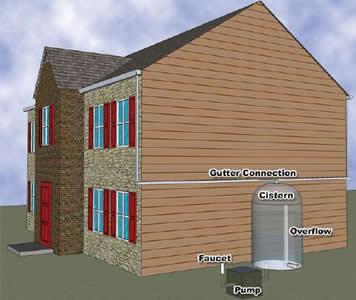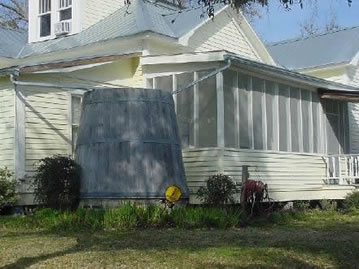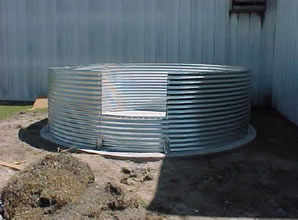|
6: Harvest Rainwater with a Cistern
A rainwater harvesting system captures stormwater runoff, often from a rooftop, and stores the water for later use. Water from a rainwater harvesting system can be used to water gardens or wash cars —even when water restrictions prevent the use of municipal water for those purposes. The harvested rainwater can even be treated and piped inside for potable drinking needs.
Rainwater harvesting systems can improve the environment by capturing nutrients and other pollutants from rooftop runoff, preventing them from contaminating surface waters. Moreover, the nutrients in rooftop runoff, such as nitrogen and phosphorus, can help plants grow when the captured water is used for irrigation. By using harvested rainwater for purposes that don’t require treated drinking water, we reduce the demand on municipal water supplies. When harvested rainwater is used inside for flushing toilets or drinking, the system can offer a significant reduction in runoff since water is being used year-round as it falls.
Rainwater harvesting has been practiced for thousands of years. However, recent concerns over water supplies and the environment have prompted many homeowners to consider using rainwater harvesting systems. While advanced systems are available from consultants and vendors, a homeowner can construct a simple system for home use with a basic understanding of its components and function.
A rainwater harvesting system consists of four main components (Figure 1):
- The gutter system collects runoff from the rooftop and directs it into the cistern (aka water storage tank).
- The cistern stores runoff for later use.
- The overflow pipe allows excess runoff to leave the cistern in a controlled manner.
- The outlet pipe, sometimes connected to a pump, draws water from the bottom of the cistern for use.
Consider all of these components and how they work together before installing a rainwater harvesting system. The cistern is the primary component, so select and locate it based on where you will use the harvested rainwater. Remember that local plumbing codes might affect the installation. Periodic maintenance will be required.
Siting
The primary consideration and constraint in selecting a cistern location is the position of the gutter downspouts. Although there is some flexibility in routing gutter pipes to various locations, it is generally easiest and most cost effective to place the cistern near an existing downspout (Figure 2). When possible, locate the cistern near the site where water will be used.
Transporting water over long distances will increase pump requirements. Before deciding where to locate a cistern, contact your local utilities companies (dial 811) to locate any underground pipes or cables that might be affected by a cistern or its structural support. Because cisterns can be incredibly heavy when filled with water, avoid placing the cistern over any buried pipes, septic tanks, or drain fields that may not support the load exerted by it. (Your local health department can provide assistance if you have a septic system and have difficulty locating it.) Do not locate an underground cistern immediately next to a building, because excavation and installation could damage or compromise the foundation.
Design
Cistern Materials
The cistern may be ordered and shipped directly to the location where it will be installed. Due to the large size and weight of many cisterns, delivery charges can be substantial. Many online retailers sell tanks that can be used for rainwater harvesting. Some companies focus specifically on rainwater harvesting systems. Homeowners can also find tanks at local stores that sell agricultural, lawn and garden, or industrial supplies. Select a cistern based on its material, size, whether it will be installed above- or below-ground, and where it will be located.
Cisterns can be constructed from a variety of materials. The most commonly available cisterns are made of plastic, fiberglass, or metal. If the rainwater harvesting system will be used to supply drinking water, special cistern materials are required. If cistern-stored water is to be used for drinking water purposes, please consult a water-harvesting vendor and local drinking water ordinances for advice on what materials to use. Only certain resins are approved by the FDA for storing potable water. Use of other materials may leach harmful chemicals into the stored water supply that cannot be easily removed by subsequent water treatment.
Plastic
Plastic cisterns are generally less expensive than other materials and don’t require assembly. But they may not be the best option when aesthetics are a priority. Their appearance can be improved with wraps made of wood or other materials. Plastic cisterns can be moved into place without much difficulty. They are relatively lightweight, and the plastic material can be easily cut or drilled with standard tools to install the necessary valves and fittings.
Translucent or light-colored materials may permit algae growth within the cistern. Plastic tanks are relatively easy to paint or decorate. Paint or other coatings can be used to prevent algae growth. Check with your local store to make sure you are purchasing long pasting paint that will adhere long term to the type of plastic you will be coating.
Metal
Metal cisterns are often adapted from grain bins. Their basic appearance is generally preferred to plastic cisterns. Metal cisterns are typically assembled from sections of corrugated galvanized metal, and a plastic liner is installed inside the cistern (Figure 3). Because a liner is needed, it may be difficult for an inexperienced installer to construct a metal cistern.
Above Ground or Below?
Several factors should be considered when deciding whether a rainwater cistern will be installed above or below ground. Above-ground cisterns are typically easier to install than below-ground because excavation for the cistern is not necessary. Below-ground cisterns have limited accessibility after installation, making it difficult to repair leaks or other problems. Due to their increased structural requirements and potential floatation concerns (discussed below in the special considerations section), below-ground cisterns are generally more expensive than are above-ground types. (Do not place a plastic cistern manufactured for above-ground use in the ground because it will collapse.)
Unlike an above-ground cistern where some low pressure needs and casual uses are possible without a pump, the use of a pump is required to obtain water from an underground cistern. Additionally, some pumps may not be appropriate for an underground cistern because the pump must be installed below the water level or be capable of providing adequate suction lift. A submersible pump or jet pump designed for shallow wells is a suitable option for pulling water from an underground cistern. Pump selection is discussed in detail on this website: http://www.bae.ncsu.edu/topic/waterharvesting/Pump4Cisterns2006.pdf publication “Choosing a Pump for Rainwater Harvesting (AG-588-08)”. The main advantage of below-ground cisterns is that they don’t occupy valuable space in a yard.
Special Considerations for Underground Cisterns
Because of the potential structural and safety concerns, it is important to comply with all underground cistern installation instructions and regulations.
- Before beginning an underground cistern installation, contact your local utilities companies (dial 811) to locate any underground pipes or cables.
- Depending upon the specific underground cistern being installed, sand, pea gravel, or crushed stone backfill material may be required. Follow the cistern manufacturer directions and specifications.
- Consult the cistern directions to determine the required specifications for backfill material, excavation depths, and the depth of soil required over the cistern.
- Potential floatation concerns: In areas where the water table can rise above the bottom of the underground cistern (see “7 Test Your Soil”), special consideration is required to ensure that the cistern is properly anchored against any potential buoyancy (floatation) and is structurally suited to handle these additional forces.
- An underground tank must be properly vented to the open air above ground to prevent the buildup of pressure or vacuum within the tank. Vents are often incorporated into a tank or can be attached as a basic fitting.
Water Treatment
Any Use
Any use will benefit from a first flush diverter to dispose of the first 10 gallons of roof runoff. Many people think of roofs as clean, but this varies with air quality. Even in rural areas, particulates, mercury, feces, and many other pollutants are likely to be deposited on the roof. There are a number of first flush devices on the market that automatically empty. Early ones were simply a standpipe with a small, slow-draining hole drilled into a cap in the bottom. But these clog easily, so for reduced maintenance find a diverter that incorporates a ball valve, a cleanout at the bottom for debris, and a drain that’s a little higher, at least, than the cleanout.
Irrigation
If you plan to use your harvested rainwater for irrigation, you don’t have to worry about pollutants like nitrogen and phosphorus; these will be good for your garden. Other pollutants, including hydrocarbons from asphalt shingles, will be treated by microbial degradation or physical filtration. Other pollutants, such as the soluble portion of zinc from a galvanized metal roof, are unlikely to significantly affect your garden. Many people irrigate their vegetable gardens straight from a rain barrel – even without a first flush diverter – with no ill effects. In fact, your plants will appreciate chlorine-free water!
Potable Uses
If harvested rainwater will be used for any use indoors – even if you just want to flush your toilets – health code often specifies the kind of roofing material (e.g. metal) that may be used in addition to meeting a certain standard for potable water. A treatment train (series of structures) to remove different pollutants is usually required. The most common residential treatment train includes a large and then a small screen to keep out larger debris, a sand filter for smaller debris, and an ultraviolet (UV) light to remove bacteria. Larger commercial cisterns might have additional equipment such as pressure tanks.
Sizing a Cistern
The size of the rainwater cistern can have the greatest impact on system cost and performance. Several factors must be considered, including the area of contributing rooftop, rainfall patterns, and anticipated usage.
Determining Contributing Rooftop Area
Examine the location of downspouts that will drain to the cistern in order to estimate the rooftop area. Note the slope/angle of the gutter, and visualize what area of the rooftop will drain to each downspout. When measuring the rooftop area, it is important to measure the roof’s horizontal projection (the distance you would go if you were to walk on the ground from the edge of the roof where the gutter sits to the peak of the roof), ignoring the pitch of the rooftop (Figure 4). Because the roof’s slope is not a factor in the area measurements, the contributing area can usually be estimated by measuring the area of the roof at the ground or foundation level.
Rainfall Patterns
Due to the rainfall patterns in the Five Counties area – 6 months on, 6 months off – a cistern for irrigation, depending on the size of your garden, might be thousands of gallons. Although public water demand will be reduced, this may still not reduce runoff enough to benefit downstream waterways, depending on the size of your roof. A cistern that serves indoor needs will fill and empty much more frequently, reducing water bills and significantly reducing runoff. In addition, this cistern will be much smaller and cost-effective. In the 6 months when there’s not much rain, your cistern may empty. Because of this, a valve is required that allows the household to switch to another water supply.
“The Texas Manual on Rainwater Harvesting” has some great guidance and tools on some more complicated calculations you can perform to optimize your tank size seasonally for your water demand. However, rainfall patterns and your budget are likely to limit the size of your cistern, such that it will definitely be empty at some point during the long, natural (and unnatural) droughts in the Five Counties area. To get a rough estimate of annual runoff volume from your roof, lookup the average annual rainfall for your area by Googling “average annual rainfall” and the closest city or town, and convert that number to feet per year rather than using inches per year. See Equation 1 below for an example. You will also need to apply a reduction factor depending on the type of roof you have and whether you will have lower runoff (as with a rough roof like composite) or higher runoff (as with a smooth roof like metal) and whether or not you’re using a first flush diverter, which decrease harvest volume by 10 gallons per downspout during every rainfall (see Table 1).
Table 1: Reduction Factors
Roof Texture |
Reduction Factor without First Flush Diverter |
Reduction Factor with First Flush Diverter |
Rough |
0.85 |
0.80 |
Smooth |
0.95 |
0.90 |
Finally, multiply the modified average annual rainfall amount by your roof area. The number you calculate will be in cubic feet, so multiply that by 7.48 gallons/cubic foot to get the amount of runoff in gallons you are looking to capture each year. Even on small roofs, residents in most of the Five Counties area will find that their roof is likely to generate much more runoff than they expected.
Equation 1: Example calculation to approximate annual runoff volume
Homeowner in Crescent City, CA:
Average annual rainfall = 75 inches/year divided by 12 inches (to convert to feet) = 6.25 feet/year
Roof area = 1250 square feet
Roof type = asphalt shingles or rough type
First flush diverter? = yes
Reduction Coefficient from Table 1 = 0.80
Average annual roof runoff = 6.25 [ft/yr] x 0.80 x 1250 [sf] x 7.48 [gal/cf] = 46,750 gal/yr
Anticipating Water Use
Estimating how much water will be used from the rainwater harvesting system is crucial to selecting an appropriate cistern size. One of the best ways to estimate water usage for irrigation is to use a simple garden water meter and record how much water is being used for tasks that will be replaced with harvested rainwater. Garden water meters that measure the number of gallons flowing through a hose or other device are available from a variety of retailers for about $10. Water usage in your house is already measured by your water company, so take a look at your bill to find your average annual demand.
Cistern Structural Support
In some cases, the weight exerted by the cistern and the water it holds may require more structural support than the soil that is in the ground now can provide. Soils are generally estimated to support at least 2,000 pounds per square foot, but you should check with your jurisdiction or a professional for your local soils. Based on the cistern’s volume, footprint (the square footage it occupies), and the density of water, you can determine whether additional structural support for a cistern is necessary. The load exerted by the cistern can be calculated using Equation 2 (below). If the calculated load is greater than the load bearing capacity of the soil (2,000 pounds per square foot), some type of structural support will be required. Structural support for an above-ground cistern could consist of a concrete or gravel pad installed using standard building design practices. Alternatively, a cistern with a larger footprint or smaller volume could be selected to reduce the cistern load.
Sand, stone, or gravel backfill and anchoring—or even the use of a poured concrete pad—may be required to ensure that even an underground cistern won’t settle. Be sure to follow the manufacturer’s instructions and any local regulations when installing an underground cistern.
Equation 2: Calculation of the cistern load to determine if there is a need for structural support
Cistern Load = Capacity [gal] x (8.35 [lb/gal] + Cistern Weight [lb/gal])
Cistern Footprint Area [sf]
Cistern Weight: The weight of an empty plastic cistern can be approximated as 0.3 lb/gal if the specific weight is unknown.
Footprint Area: Area of the cistern in contact with the ground.
Conveyance
Gutters, Downspouts, and Pipes
An existing gutter system can be easily modified to direct rainwater into a cistern. In most cases, some type of gutter screen or filter is needed to prevent debris from entering the system. Although more expensive, screens installed across the length of the gutter are less likely to clog and cause gutter overflows than filters located only at the downspout. Metal gutter downspouts and fittings are available from home improvement stores and can be used to route rainwater into a nearby cistern. Remember that metal downspouts are generally attached to a building and may require additional structural support when spanning any substantial distance to a cistern. Corrugated plastic pipes are an alternative to metal downspouts that may make installation easier and require less structural support. To prevent mosquitoes from breeding within the cistern, any open pathways to the captured water should be covered by 1-millimeter or smaller mesh screen.
Several approaches can be used to direct more water to a rainwater harvesting system. The easiest and safest way to contribute more water is to pipe water from multiple existing downspouts into the cistern. Using this approach provides water from more areas of the rooftop without the risk of exceeding the capacity of either the downspout or gutter. In locations where it is not practical to direct water from multiple downspouts into the cistern, it may be possible to modify the gutter system so that more water is directed to a single downspout.
Standard gutter systems are designed to efficiently remove water from the rooftop and gutter through numerous downspouts. Any modifications to the gutter system without careful consideration can result in overflows or structural failure. Per the Plumbing Code, gutters should convey water for the 100-year, 1-hour storm event (the same event used for sizing the cistern overflow). Carefully consider Tables 2 and 3 below before modifying gutters to direct water into a cistern. Table 1 lists the maximum rooftop area that can be safely drained by various gutter and pipe configurations, while Table 2 lists the maximum roof area that can be drained by a downspout.
Maximum Allowable Horizontal Projected Area in Square Feet (Tables 2 & 3)
|
Table 2: For Vertical Piping (Downspouts)
|
Pipe Diam. [in] |
Maximum Roof Area [sf] |
2 |
1,440 |
3 |
4,400 |
4 |
9,200 |
5 |
17,300 |
6 |
27,000 |
8 |
58,000 |
|
Table 3: For Horizontal Piping (Gutters & Pipes)
|
Pipe Slope [in/ft] |
1/8 (~ 1%) |
1/4 (~2%) |
1/2 (~4%) |
Pipe Diam. [in] |
Maximum Roof Area [sf] |
3 |
1,644 |
2,320 |
3,288 |
4 |
3,760 |
5,300 |
7,520 |
5 |
6,680 |
9,440 |
13,360 |
6 |
10,700 |
15,100 |
21,400 |
8 |
23,000 |
32,600 |
46,000 |
|
Outlet
To draw water from the cistern, some type of faucet or outlet pipe must be installed. Although a valve located near the bottom of the cistern can be used to pull water from the cistern for small uses, such as filling watering cans, a pump is necessary to supply adequate pressure for many other uses. Pump selection is discussed in detail in detail on this website publication: Choosing a Pump for Rainwater Harvesting (AG-588-08).
The outlet should be installed at least 6 inches above the bottom of the cistern to provide room for sediment storage. Because the outlet connection will be subject to substantial water pressure, a bulkhead fitting is necessary to prevent any leaks. Install a bulkhead fitting by drilling a hole into the cistern and threading the fitting through the hole (Figure 5). Because installing a bulkhead fitting requires access from the inside of the tank, it is often worth the extra expense to have the bulkhead fitting installed by the cistern vendor.
Emergency Overflow
Some type of overflow or bypass is required to release water when the cistern has reached its capacity. The cistern overflow must handle the same flow as the gutter system, per the California Plumbing Code. Install the overflow near the top of the tank, leaving several inches between the overflow and top of the tank for storage during intense storms. A bulkhead fitting installed near the top of the tank will provide a sturdy connection point for the overflow pipe. However, these fittings can be expensive, especially for large diameters. Because an overflow connection at the top of the tank will not be submerged under pressure and a perfect seal with the cistern wall is not necessary, a variety of PVC fittings can be adapted to connect the overflow pipe. If the overflow is routed internally through the bottom of the tank, as shown in Figure 6A, a bulkhead fitting is required to prevent leaks. For underground cistern installations as shown in Figure 6B, the overflow can be installed with a t-fitting on the pipe carrying water from the gutter to the cistern. For both above- and below-ground cisterns (example shown in Figure 6C), it is important to protect, armor, or reinforce the soil around the overflow outlet to prevent erosion.
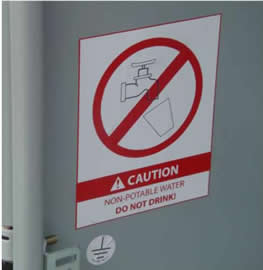 Water Supply Plumbing Codes
Because widespread public interest in rainwater harvesting systems is a relatively recent development, many plumbing codes do not currently address the use of harvested rainwater. Plumbing codes are constantly evolving. Consult your local building or development services department to determine which plumbing fixtures (such as tubs, toilets, and sinks) can legally be supplied with harvested rainwater and what specific regulations apply. Many of the restrictions associated with plumbing codes can be avoided by maintaining entirely separate plumbing networks or using harvested rainwater for outdoor purposes only. Regardless of the plumbing network, any faucet or fixture supplied by the rainwater harvesting system must be properly labeled with its source. Harvested rainwater contains pathogens and other pollutants at levels that pose health concerns if drunk. Installing signs or labels that warn of these health concerns is important to prevent any potential hazards (Figure 7).
Maintenance
With routine maintenance, rainwater harvesting systems should provide a sustainable, non-potable water supply for many years. Over time, sediment carried by incoming runoff will be deposited within the bottom of the cistern and may require removal. Using a first-flush diverter or sediment trap will reduce the amount of sediment going into the cistern (Figure 8). In most cases, a 6-inch sediment storage zone at the bottom of the cistern should provide years of sediment storage. If sediment buildup is a concern, install a valve at the bottom of the cistern to regularly drain the sediment-laden water. Due to the risk of drowning and exposure to toxic gases, a homeowner should never enter a cistern for maintenance or any other purpose.
Check gutter connections every three to four months and after intense rainfall to check for any damage. Clean gutters of leaves and debris as needed and at least seasonally. Check mosquito screens periodically to ensure they are in place and not blocked by debris. Maintain any pumps or filters used in the rainwater harvesting system according to the manufacturer’s recommendations.
Rain Barrels
Rain barrels are less expensive alternatives to large rainwater harvesting systems and can be used to meet small outdoor water demands. A rain barrel is typically constructed from a 55-gallon container and has the same main components as a large rainwater harvesting system, including a gutter connection, overflow, and outlet valve or faucet (Figure 1). Because 55-gallon barrels are used to store and transport a variety of materials, used barrels are inexpensive to obtain. But they may require special cleaning, depending on their previous use. The relatively small size of a rain barrel usually does not merit the cost of installing a pump because gravity flow is generally adequate to fill a hand watering can. Although a rain barrel does not provide enough water to irrigate a lawn, it can be used to store water for hand-watering plants in a small garden area. To build a simple variation of a rainwater harvesting system for outdoor use only, see “5 Build a Rain Barrel”.
Permits
Permitting varies, so check with your local jurisdiction’s building or development services department to find out what codes may apply to your project. Retrofits using rain gardens will likely not require permits, but new development likely will as part of the larger project permitting. In addition, where stormwater management is required, clarify relevant calculations such as detention to confirm where you can subtract areas where you will install stormwater management practices from the total project area that you may have to detain or otherwise treat.
If information in this guidance conflicts with your jurisdiction’s requirements or approach, then follow their guidance instead.
Photo and Document Credits
This document was adapted (but mostly lifted word for word) with permission from William Hunt, Ph.D, P.E. from the Urban Waterways “Rainwater Harvesting: Guide for Homeowners” (AG-588-11), North Carolina Cooperative Extension Service, N.C. State University.
Figure 1: NC Cooperative Extension. Figure 2: LSU Ag Center. Figures 3 – 7: NC Cooperative Extension. Figure 8: Dennis Slota.
Download/View the 5C Program Stormwater Management Handbook:
Download by Chapters:
For more information, contact us
©2012. Five Counties Salmonid Conservation Program and Green Girl Land Development Solutions. This publication may be photocopied or reprinted in its entirety or in portions for noncommercial purposes. This publication is available in an accessible format on the 5C web site at http://www.5counties.org/docs.htm. If future documents are based on this document, credit should be given with the following wording: “Portions of this document are adapted from “06HarvestRWCistern.doc”, http://www.greengirlpdx.com/JOBS/5CSCP/06HarvestRWCistern.doc ©2012, Five Counties Salmonid Conservation Program and Green Girl Land Development Solutions. No risk or liability by either of these organizations shall be assumed for information offered in this document.”
Back to Land Use Planning page
Back to Programs Page
|

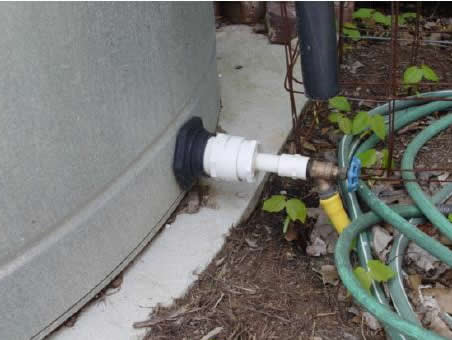 Figure 5 Bulkhead fitting installed at the base of a cistern.
Figure 5 Bulkhead fitting installed at the base of a cistern. 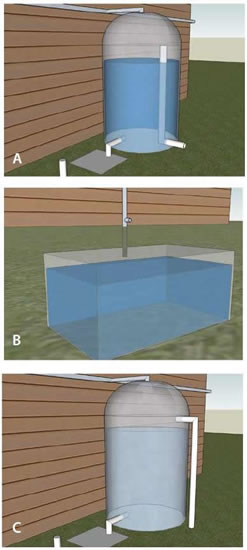 Figure 6 A, B, C. Basic overflow configuration
Figure 6 A, B, C. Basic overflow configuration  Figure 7: Stickers remind users that untreated cistern water is not safe to drink without treating.
Figure 7: Stickers remind users that untreated cistern water is not safe to drink without treating.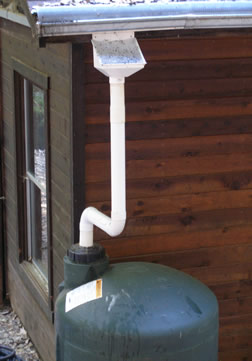 Figure 7: Stickers remind users that untreated cistern water is not safe to drink without treating.
Figure 7: Stickers remind users that untreated cistern water is not safe to drink without treating.